In my last building report of the Omega 42 I promised that that after a relatively calm period in the shed now a phase of increased activity has started. This also included my own parts, I do help building my ALPHA as much as possible. One of these jobs was the delivery of the 1:1 ratio keel model to the foundry. Normally you would just send a professional courier and maybe this would have been the cheaper way, but I volunteered to drive the part to the casting house myself: I wanted to be there right from the start, somehow, I don´t know why, this whole chapter of the boatbuilding feels kind of special …
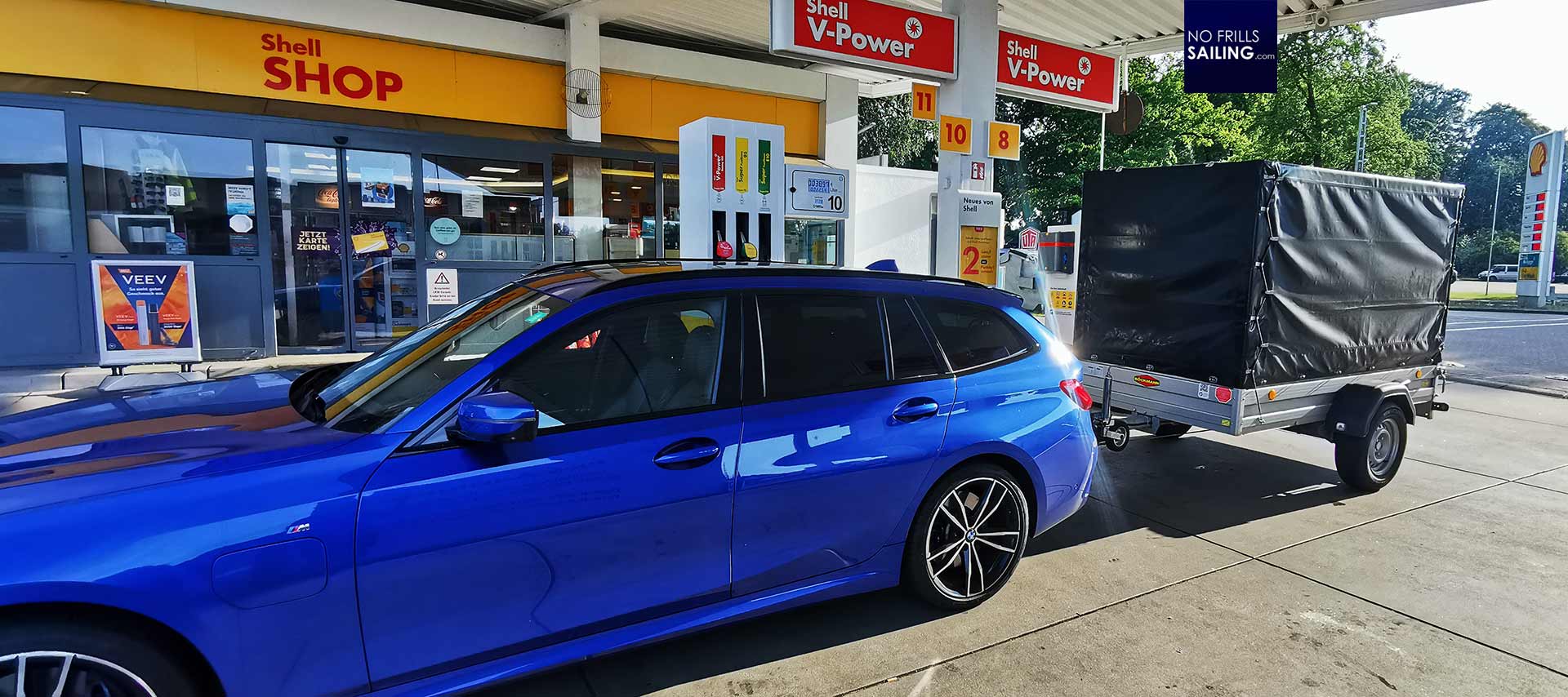
In this, yesterday at 4 o´clock in the morning I drove to the shipyard where the guys had already prepared a trailer which I put behind my car. At exactly 8 o´clock I started the 660 kilometers drive from the building shed deep into Germany´s once smoking hot industrial heart, a little road trip to where the keel of my boat will be born. Whilst driving I often thought about the motivation to do this. Somehow I always had these pictures in my head where silver-wrapped guys with huge mirrored glasses cast a bell, pouring white glowing liquid metal into a little hole in the sand, sparks flying, a devout, a holy moment. Maybe I am too romantic, but for me, this keel is kind of like a bell to a church.
A piece of German industrial history
Driving at a very low speed through the burning hot summertime landscape on the Autobahn, after some 8 hours I finally reached the rural area of Cologne. Passing by the Ruhrpott, the biggest City of Europe, the once smoking center of Germans coal mining, steel and heavy industry, the area around Cologne retained some of this aura still today. Of course, most, almost all to be honest, of our heavy industry is gone. All of the coal mining has been “structurally converted” – meaning has ceased to exist. It is just three or four of our largest surface mining areas which still produce the valuable energy source here, and instantly burn it in a handful of big ass power plants. Where, if not here, would you suppose the location of a casting house?
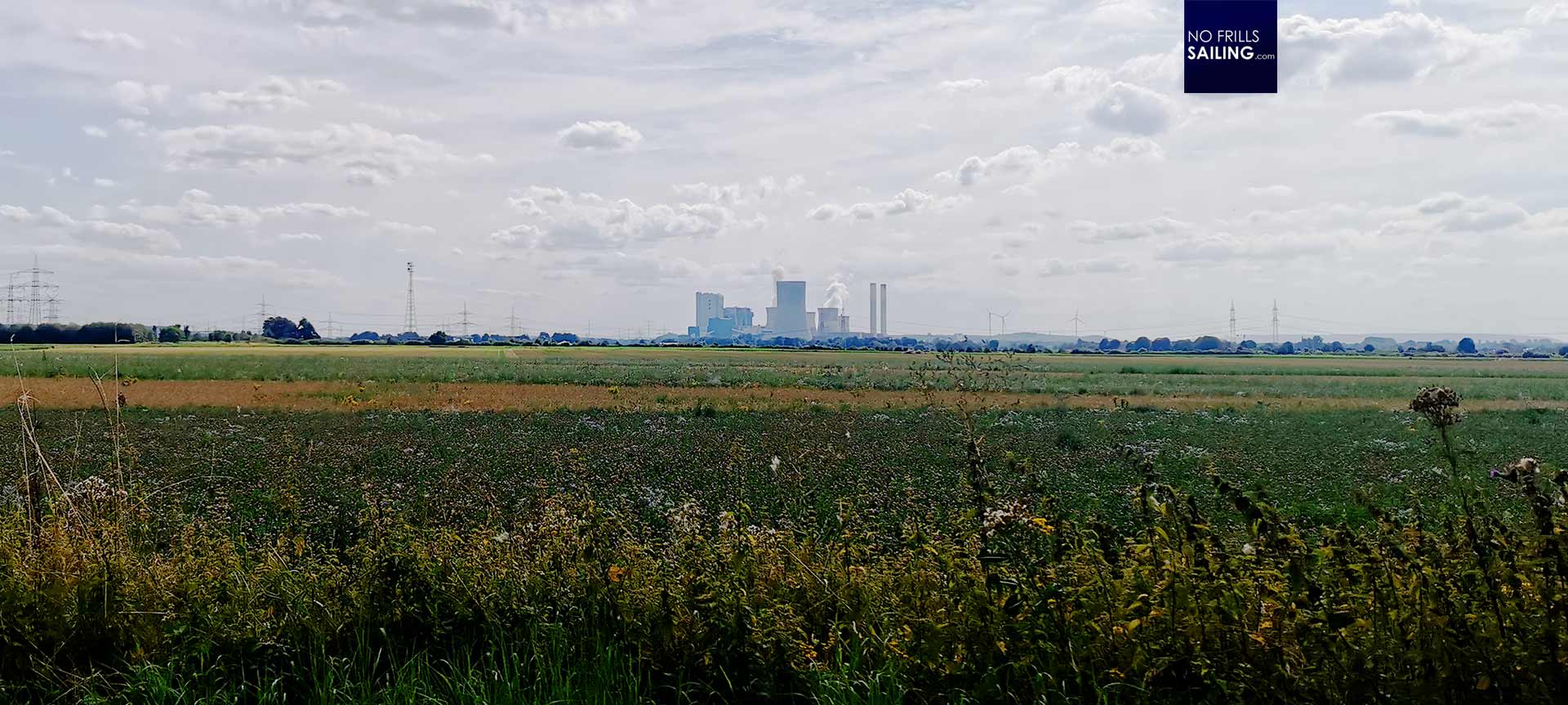
I arrive in a small town, not bigger than a larger village, called Rommerskirchen. Just under 15.000 people live here, it´s a happy place with a low unemployment rate, nice houses, nice cars. The history of this place dates back into as early as 5300 years before Christ, it has been a Roman Villa Rustica, a rich politician or soldier´s manor and suffered under Napoleonic occupation. All of this is part of the culture here, I think to myself, as an automatic door leading onto the area of the foundry opens.
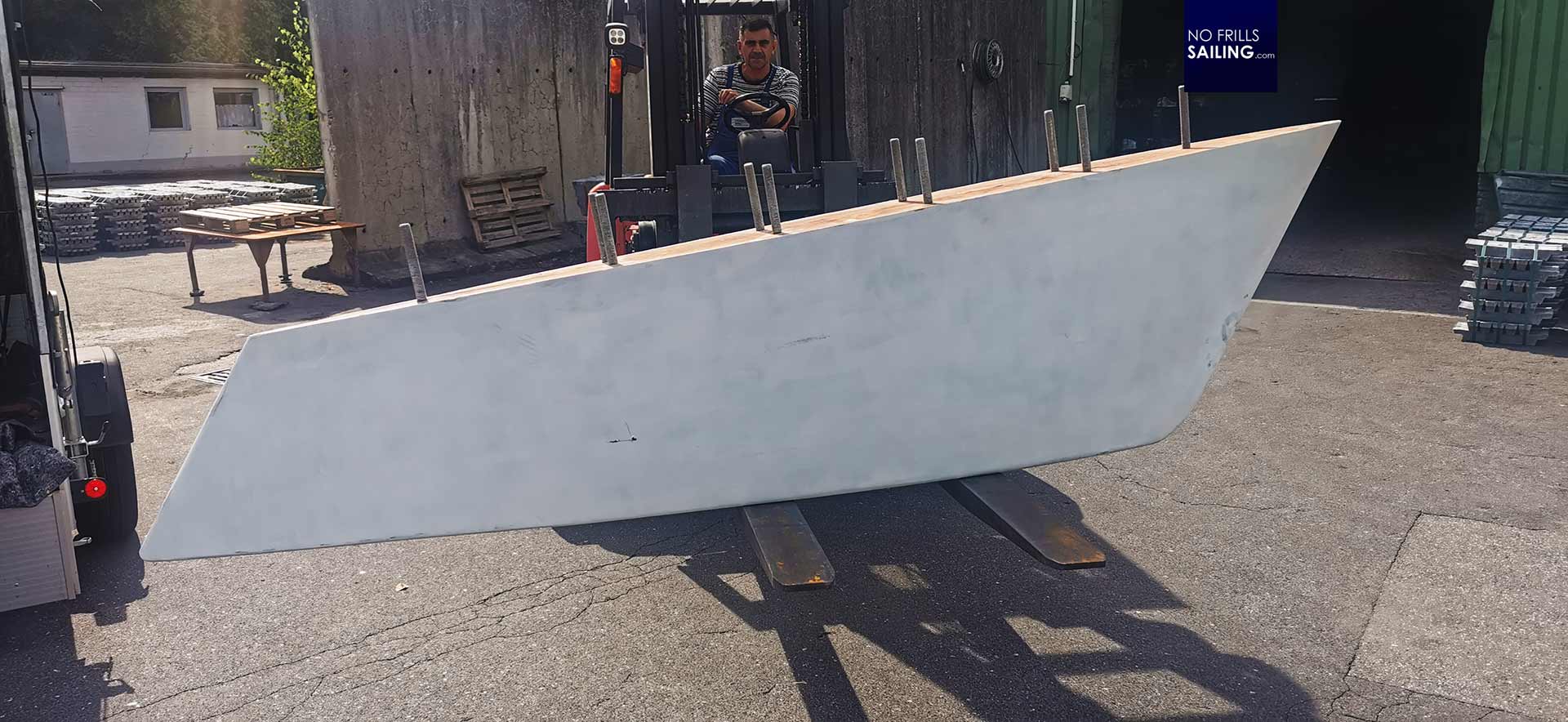
It is long after knocking-off time for the workers. But knowing that a guy is driving there to deliver a part from northern Germany, one of the staff agreed to remain at the location to wait for me. He greets me with a bright, warmhearted smile. His handshake is firm, his white teeth and deep laugh lines reveal a friendly, humorous character. After all, I am also in Germany´s carnival hotspot. I open the tarps of the trailer, unleash the keel model: “Ah, too heavy”, he says and a minute later returns with a forklift truck. Indeed, the large, more than 3 meters long, keel model weighs around 80 kilograms. Which is not so much the problem, but as it is sleek and smooth there´s not much good grip to carry it by hand.
One of Europe´s last big specialized casting houses
It was kind of a little Odyssey to find this foundry. In fact, Schumetall, which is the name of the company, is one of the very few last specialized foundries for big-time lead casting. As a family business, this company has been focusing on sailboat keels which they produce either as one-off special projects (like my keel) or as smaller series productions for special editions. Some X-Yachts for example are sailing with a keel made by these guys. As far as I know, there is another foundry able to cast sailboat keels in lead in Poland and another one in the United Kingdom. Seeing the neatly stacked mountains of lead bars, I am instantly reminded of the business here. I will produce another article on this company and show you around in detail, a guided tour by the sympathetic boss of Schumetall, but I can tell you this: It´s a very hard business and that´s the reason why there are so few left.
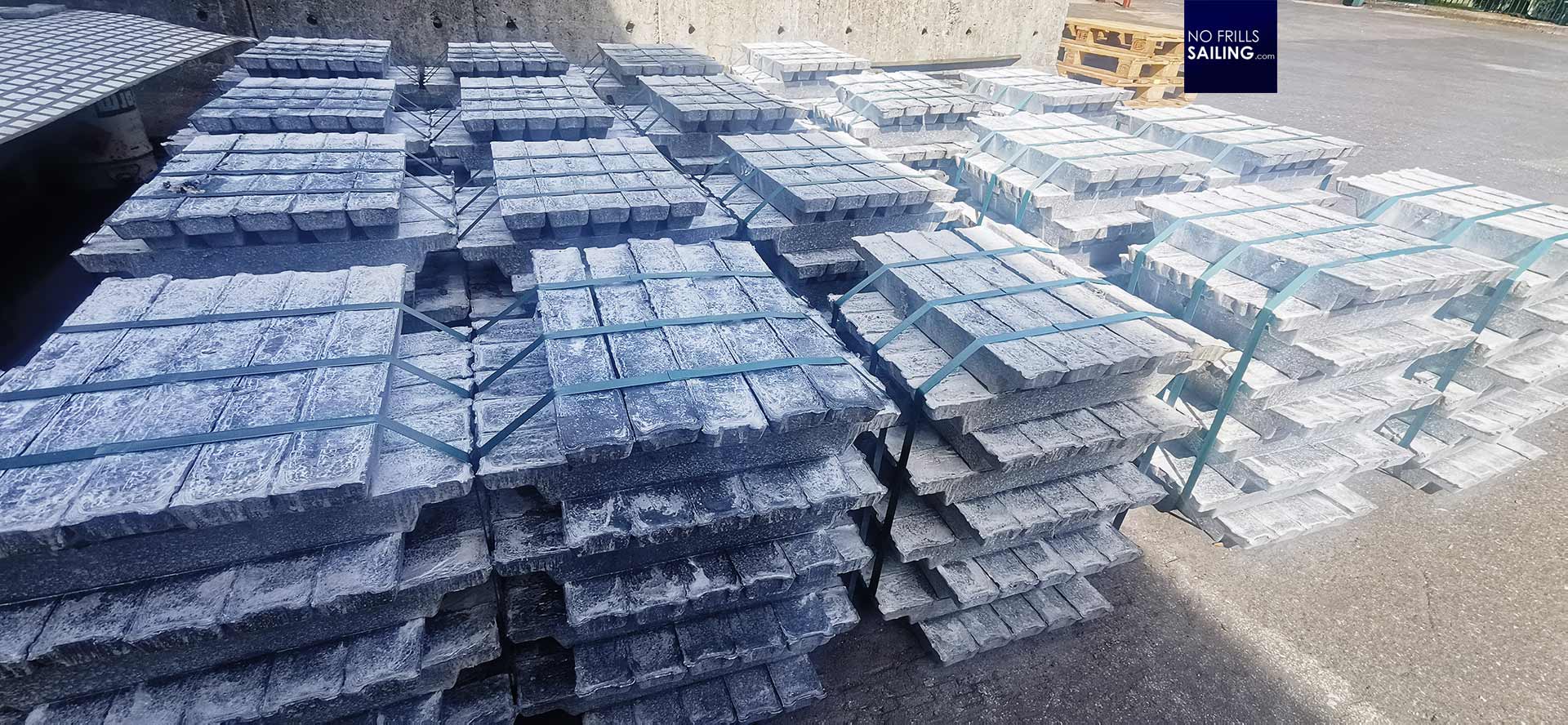
First of all, the big production companies and the bulk of the boats produced today do not have lead in their keels anymore. Cast iron is much cheaper and bears almost the desired material properties. Lead has a density of 11.3 tons per cubic meter, iron of just under 8 tons. It is much cheaper to buy (and thus to sell to an increasingly price-sensitive customer) and there are barely comparable ecological regulations for the casting houses to adhere to than a company like Schumetall has to follow when working with the heavy metal lead. And then there are the ridiculously high energy prices which had skyrocketed in the past 2, 3 years. I feel very lucky being sure that my keel will be cast here as no one knows if such a business model will be feasible and able to survive here for long. Sadly, something I´ve heard so frequently by entrepreneurs and businessmen in the past years.
How the Omega 42 keel will be made
But enough with bad feelings and current political or economical hustle. As we unload the keel model into a vestibule of the factory, the worker takes some measurements and inspects the model. You may ask yourself what this model is for and how a keel is made? Well, it is kind of like casting the before mentioned bell (and believe me, I will come here to document this in detail when they start working on ALPHA´s keel for sure!). At first, a casting mould must me made.

You have read about moulds in boatbuilding already and it is kind of funny that this concept is kind of a red thread. The mould, of course, is the “female” shape of the form that needs to be cast. To achieve this, the model of the keel basically is put in a large custom-made case, surrounded by a special sand. This sand has very unique properties of which one is that it “hardens”. The model is then taken out of the mould, leaving behind a void. This void has the shape of the model. If now liquefied lead is poured into the mould and hardens, the keel will be cast. In reality, it is a bit more complicated, but this is just the first of two or three in-depth articles I am going to produce about this topic. Anyway, that´s of course not all.
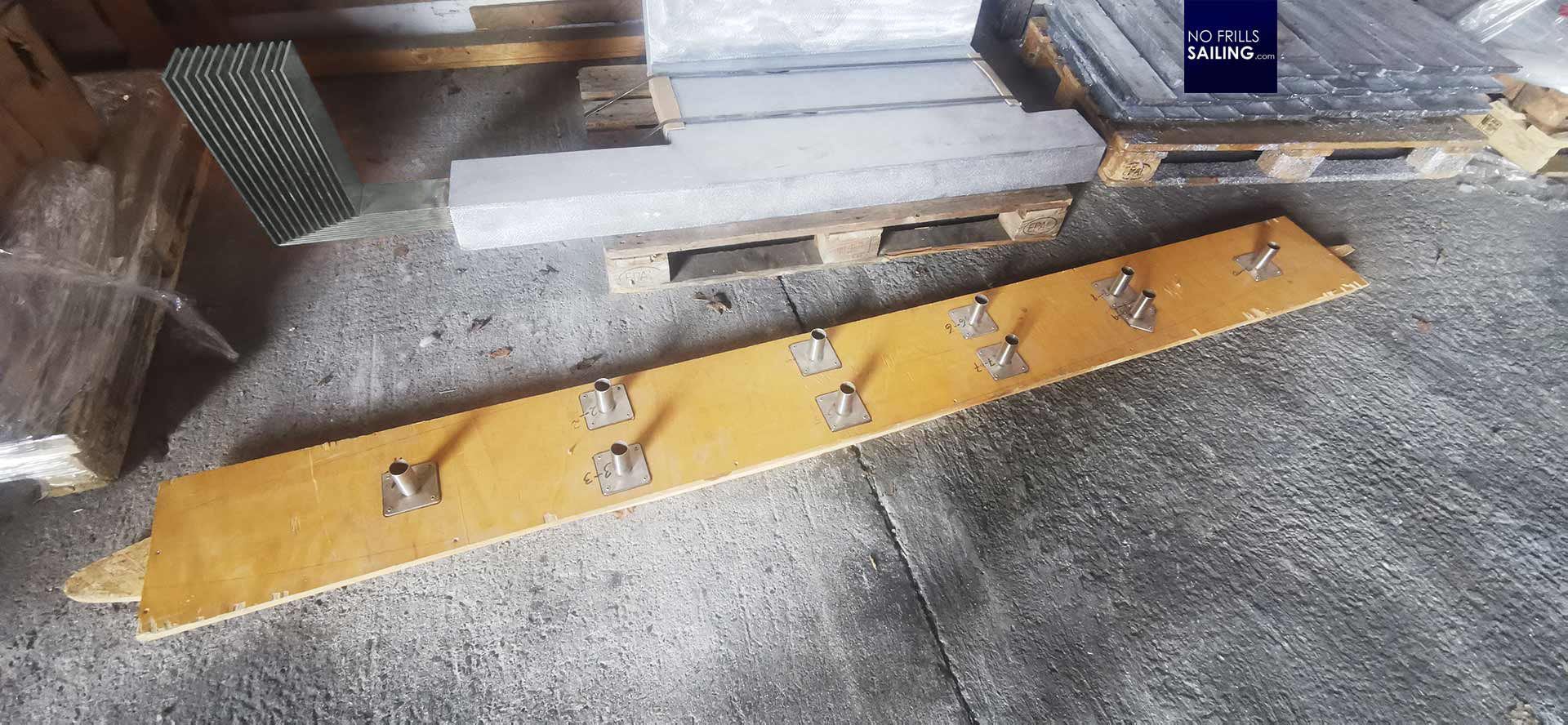
Any keel needs to be attached to the boat´s hull. This is done with massive keel bolts, made of high grade stainless steel. You may see these bolts sticking out of the model in the pictures above – but in reality, it is not just some metal sticks cast into the lead. It is a delicate steel frame “cage” that will be welded following strict instructions. You will never ever see this cage again once it is covered in metal – but again, I will show how it looks like when it is made. To have the massive 24 millimeters bolts placed at the exact positions on the keel´s upper side where it will be flanged onto the bottom of the GRP hull of the yacht, my shipyard has made another gauge model for the exact positions of the bolts alone.
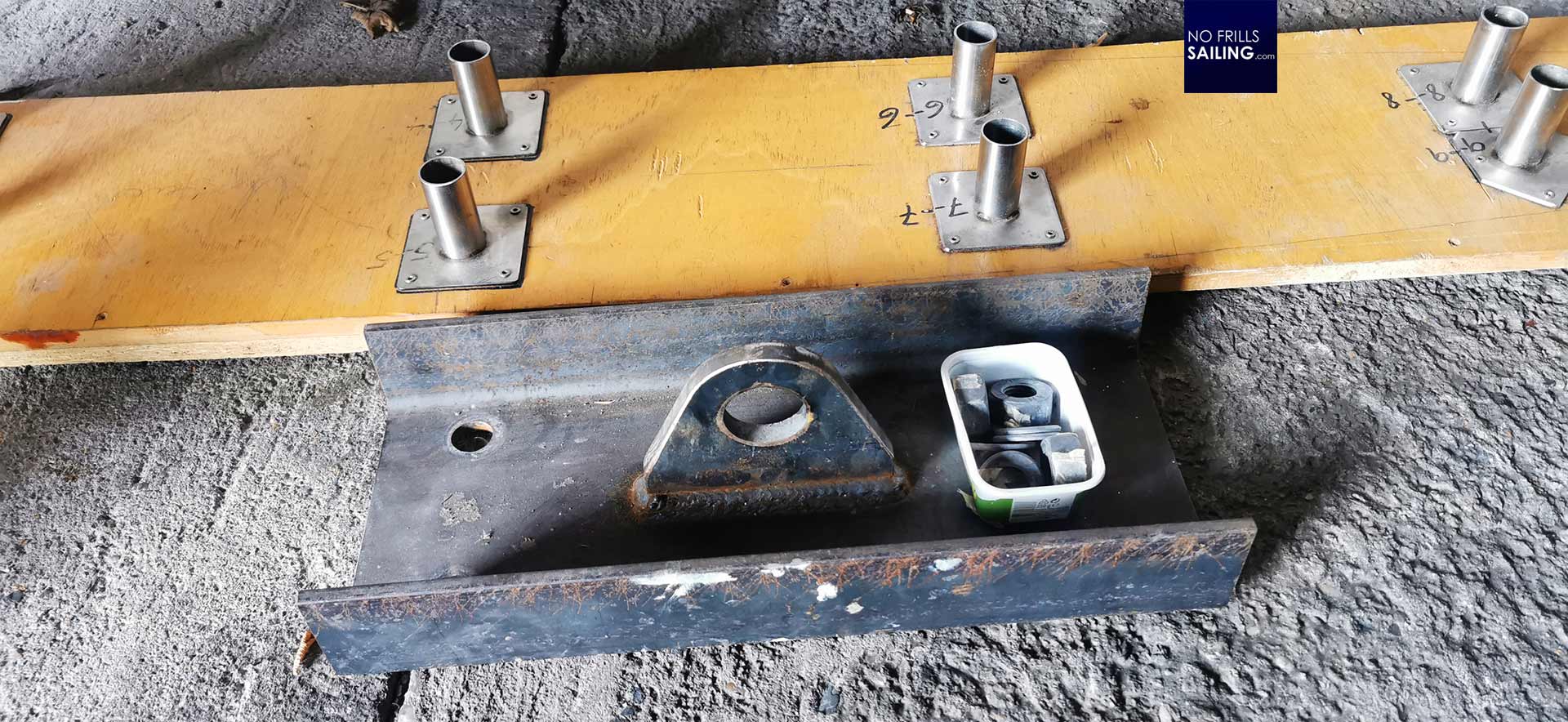
The keel of the Omega 42 has a construction weight of 3.750 kilograms of lead. Ten keel bolts are placed in eight pairs of two and two single bolts at both ends of the keel´s flange. Heiner Francke, boss of Mueritz Bootsservice which is the shipyard that makes the Omega 42, has a special request this time: Other than with hull number #401 WINDFAENGER, he wants to have a tube incorporated into the keel. This tube – empty at first – will be filled with molten lead once my finished boat is weighed. Any Omega 42 is essentially a semi-custom one off: My special choices of equipment and materials (and the choices of other owners buying their Omega 42) will make it impossible to have a set, never changing weight. As for ALPHA, we know for sure right now that this boat will be essentially the lightest Omega 42 ever made. But as we want and have to reach the construction displacement of 7.4 tons – any kilogram saved in the hull must be added to the keel. Therefore, to compensate for the weight, Heiner is leaving an empty channel or tube that will be filled up back at the shipyard with all the kilograms saved. By the way, this will increase stability of my boat, because, of course, you want the wait down below on the lever of the keel, not up in the boat … And to finally get the keel loaded onto a truck after casting and bring it back to the Baltic shores, a third parts which is the crane gear, custom-made as well, is delivered to the casting house.
Let´s fire it up!
So, by any means, the guys theoretically can start casting. After refurbishing and smoothing the model, works can basically commence. But then there´s this delicate commodities business. As I understood, lead is a trade commodity like gold or aluminium. A material which huge corporations and brokers are speculating on and with at the big stock exchanges. Day price is the key: Bought today and the price may be high, waiting for while, you may save a lot. Right now, price for the raw lead material is at more than 2 Euros per Kilogram. Tomorrow it may go down – or rise. That´s the art of Schumetall´s purchasing department too: To watch for a good opportunity and get the material. Their stock is piled up neatly, but right now I don´t know if any of these matte shimmery bars are destined to melt for my keel. Besides, right now, in August, it´s bank holidays for most big businesses here in Europe, so it may take a few weeks before it literally gets hot.

Another 660 kilometers and some 8 hours later I arrive back at the shipyard to give back the trailer. Looking at the hull´s bottom of my Omega 42, I see the huge flange, I count ten holes for the bolts and imagine how great it will be when the huge, long, sleek keel will finally be attached to my boat. With a ballast-to-weight ratio of 48 per cent, the keel of the Omega 42 has a huge leverage, provides great stiffness, pointing ability and thus safety for the boat. Happy to having seen at least an Amuse Gueule as the more exciting things are yet to come, I can´t wait the foundry to being fired up. Stay tuned for more stories out of the melting pot …
You might also be interested in these related articles on “Made in Germany”:
Handmade high-precision propellers of SPW in Germany
A day at Wempe chronometers in Hamburg
Life jackets by Secumar: A family business still
